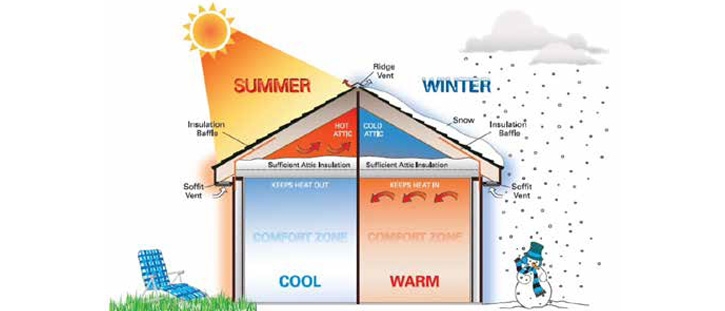Energy Mysteries Solved: Invisible Factors that Contribute to High Energy Use

My wife and I have been watching a suspenseful TV show lately. Each episode keeps us hooked by hinting at things but leaving circumstances and plotlines a mystery. We never quite know the whole picture of what is going on or where the tale is headed.
There is something human about enjoying sensations of anxiety, anticipation and uncertainty through our favorite characters. But when it comes to our expenses, we'd rather avoid those feelings. So, why do they surface with our energy bills?
Although we are blessed here in Arkansas with kilowatt-hour rates much lower than the national average, sometimes, we can experience a jolt when we receive our monthly bills. However, understanding and considering two invisible factors can take some of the suspense out of our energy costs.
The two invisible factors are air and heat:
Air: The largest portion of a typical home’s energy use is heating and cooling. Our HVAC systems blow out hot or cold air, and where this air ends up has a huge impact on our energy bills. If we have leaky ducts, we might be spilling air into the crawlspace or attic. If we have issues with our home’s air barrier, we are pulling unconditioned air into our home. Leaky ducts and gaps in your home’s air barrier waste energy by letting conditioned air escape and unconditioned air enter your home. This forces your HVAC system to work harder, raising your energy bills. Sealing these leaks helps reduce costs.
Heat: As stated in a previous article, 95% of our energy bill ends up dealing directly with either creating or moving heat. HVAC systems are just moving around or creating heat. Refrigerators and freezers are machines that remove heat from inside of the unit. Other appliances and devices mostly use energy to transport or create heat as well, sometimes as an undesired byproduct.
Solve the energy mysteries by:
-
Sealing air leaks and insulating ducts.
-
Properly insulating attic space.
-
Scheduling regular HVAC maintenance.
-
Consistently changing air filters.
-
Upgrading older appliances with more energy-efficient ones.
- Lowering water heater temperature to 120 degrees.
By continuing to visualize how energy is used in our homes, we can take some of the suspense out of our monthly bills and even learn to lower them!
Mitch Ross is the energy efficiency manager for the Electric Cooperatives of Arkansas.